How to Train Clients With Back Problems (Step-by-Step Guide)
Knowing how to train clients with back problems can significantly broaden your client base as a personal trainer. But it’s essential that you have the appropriate tools and understanding to effectively train someone with back problems. From lower back pain to herniated discs and other back issues, understanding how to train clients with back pain is important. Making use of certain personal training software features can be a great help. Discover how to train clients with back problems and find out about all the best personal training tools you’ll need in this comprehensive guide.
- Training clients with back problems necessitates a thorough assessment to understand the source of their pain and identify appropriate exercises.
- Most clients with back problems will need to avoid heavy lifting and high-impact exercises initially, focusing on strengthening the core and improving flexibility.
- Implementing workout and assessment software can help secure your client’s safety while assisting them in achieving their fitness goals with fewer setbacks.
Breaking into training special populations, such as clients with back problems, can be a rewarding avenue for personal trainers to expand their business.
To train clients with back problems effectively, it’s crucial that you’re not only well-versed in managing back issues but also equipped with the tools to optimize your training; that’s where personal training software becomes invaluable. By utilizing the features offered by the best online personal training software, you can train clients with back problems in a way that supports their recovery, not exacerbates their issues.

For a firsthand experience of the leading personal training software from Exercise.com, book a demo now!
Understanding Common Back Problems
Back problems are a common issue faced by many individuals, and as a fitness professional, it is essential to have a comprehensive understanding of these conditions. Common back problems include herniated discs, spinal stenosis, sciatica, and muscular imbalances. Herniated discs occur when the softer inner portion of the disc protrudes through the outer layer, causing nerve impingement and pain. Spinal stenosis refers to the narrowing of the spinal canal, which can lead to compression of the nerves. Sciatica is characterized by pain radiating along the sciatic nerve, often caused by irritation or compression. Muscular imbalances can result in poor posture and increased stress on the back muscles, leading to pain and dysfunction.
It is important to note that back problems can have various causes, including poor posture, sedentary lifestyle, repetitive movements, and trauma. Poor posture, such as slouching or hunching over, can put excessive strain on the back muscles and lead to discomfort. A sedentary lifestyle, characterized by long periods of sitting or inactivity, can weaken the back muscles and contribute to back problems. Repetitive movements, such as lifting heavy objects or performing the same motion repeatedly, can strain the back and increase the risk of injury. Additionally, traumatic events, such as falls or accidents, can cause immediate back pain or lead to long-term issues. Therefore, it is crucial for fitness professionals to not only understand the common back problems but also be aware of the various factors that can contribute to these conditions.
Identifying Back Problems in Clients
In order to effectively train clients with back problems, it is crucial to accurately identify their specific condition. This can be done through a combination of client interviews, physical assessments, and collaboration with healthcare professionals. During the initial consultation, listen attentively to the client’s history of back pain and any previous diagnoses or treatments. Conduct a thorough physical assessment, paying close attention to posture, range of motion, and any signs of nerve impingement or muscle imbalances. It may also be necessary to request imaging or other diagnostic tests to confirm the diagnosis and severity of the back problem.
Once the specific condition has been identified, it is important to develop a tailored exercise program for the client. This program should take into account their individual needs, limitations, and goals. For example, clients with herniated discs may benefit from exercises that strengthen the core and improve spinal stability, while those with spinal stenosis may require exercises that focus on improving flexibility and relieving pressure on the spinal nerves.
In addition to exercise, other modalities such as manual therapy, heat or cold therapy, and electrical stimulation may be incorporated into the treatment plan to help alleviate pain and promote healing. It is important to regularly reassess the client’s progress and adjust the program as needed. Regular communication with the client and their healthcare professionals is essential to ensure that the training program is effective and safe.
Importance of Proper Training for Clients with Back Problems
Proper training for clients with back problems is essential to ensure their safety and overall well-being. By understanding the underlying cause and limitations of their back condition, fitness professionals can create workout plans that address these issues while still allowing for progress and improvement. The goal is to minimize pain, increase strength and flexibility, correct imbalances, and prevent further injury or exacerbation of the back problem. Keep in mind that every client’s needs will be unique, and it is important to individualize their training program accordingly.
One important aspect of training clients with back problems is to focus on proper form and technique. This includes teaching clients how to maintain a neutral spine, engage their core muscles, and avoid excessive strain on the back. By emphasizing proper form, fitness professionals can help clients perform exercises safely and effectively, reducing the risk of further injury.
In addition to exercise, incorporating other modalities such as stretching, foam rolling, and manual therapy can be beneficial for clients with back problems. These techniques can help improve flexibility, release muscle tension, and promote better alignment. Fitness professionals can work with clients to develop a well-rounded program that includes a combination of strength training, cardiovascular exercise, and therapeutic modalities to address their specific needs.
Assessing Client’s Back Condition and Limitations
Before designing an appropriate workout plan, it is essential to assess the client’s back condition and limitations in detail. This includes identifying any specific movements or exercises that aggravate their pain or discomfort. Range of motion tests can help determine the level of flexibility and mobility in the spinal column and surrounding tissues. In addition, assessing the core strength, balance, and postural alignment will provide valuable insights into the client’s overall functional capacity. By understanding the specific limitations and abilities of the client’s back, it becomes possible to tailor the training program accordingly.
Furthermore, it is important to consider any previous injuries or surgeries that the client may have had related to their back. This information can help determine if there are any specific areas that require extra caution or modifications in the workout plan. Additionally, assessing the client’s lifestyle and daily activities can provide valuable context for understanding how their back condition may be affected in their day-to-day life. By taking all of these factors into account during the assessment process, a more comprehensive and personalized workout plan can be created to address the client’s specific needs and goals.
Creating a Safe and Effective Workout Plan
Creating a safe and effective workout plan for clients with back problems requires a cautious and individualized approach. Emphasize exercises that promote proper posture, stability, and core strength to support the back. It is crucial to use a variety of training modalities, including resistance training, cardiovascular exercise, and flexibility training, to achieve well-rounded fitness. However, always modify exercises as needed to ensure the client’s comfort and safety. This may involve using props or equipment to provide additional support or reducing the range of motion for certain movements. Gradually progress the intensity and volume of the workouts, taking into account the client’s response and feedback.
Strengthening Core Muscles for Back Support
Strengthening the core muscles is a fundamental aspect of training clients with back problems. The core muscles, which include the abdominals, lower back, and hips, provide stability and support to the spine. Focus on exercises that engage these muscles, such as planks, bird dogs, and pelvic tilts. Gradually progress these exercises to challenge the core’s strength and endurance. Ensure clients maintain proper form and technique during these exercises and do not overload the spine. By strengthening the core muscles, clients can improve their posture, reduce back pain, and enhance overall back stability.
Stretching and Flexibility Exercises for Back Pain Relief
Incorporating stretching and flexibility exercises can provide significant relief for clients with back pain. Proper stretching helps improve the flexibility of the muscles surrounding the back, reducing tension and promoting optimal range of motion. Include stretches for the hamstrings, hip flexors, pectorals, and erector spinae muscles. Additionally, incorporate techniques such as foam rolling and self-myofascial release to address any knots or trigger points in the muscles. Encourage clients to perform these stretches regularly, both during training sessions and as part of their daily routine.
Low-Impact Exercises for Clients with Back Issues
Low-impact exercises are particularly beneficial for clients with back issues, as they minimize stress on the spine while still providing a challenging workout. Examples of low-impact exercises include swimming, stationary cycling, and using an elliptical machine. These activities are gentle on the joints, reduce compression on the spine, and can help improve cardiovascular fitness without aggravating back pain. Incorporate these exercises into the client’s training program, gradually increasing the intensity and duration as tolerated.
Implementing Proper Form and Technique to Prevent Injury
Implementing proper form and technique is essential to prevent injury when training clients with back problems. Emphasize the importance of maintaining a neutral spine during exercises, avoiding excessive flexion, extension, or rotation. Teach proper breathing techniques to promote stability and support for the spine. Additionally, provide clear instructions on how to execute each exercise with precision. Regularly observe and provide feedback on the client’s form, making necessary corrections to prevent any compensatory movements or undesirable strain on the back.
Using Props and Equipment to Modify Exercises for Back Problems
Props and equipment can be valuable tools when modifying exercises for clients with back problems. For instance, using stability balls, foam rollers, or resistance bands can provide additional support and stability during exercises. These props can help maintain proper spinal alignment and reduce the load on the back muscles. Additionally, utilizing adjustable benches or incline surfaces can alter the angle and intensity of exercises to suit the client’s specific needs. Be creative and resourceful in utilizing props and equipment to tailor the workout plan to the client’s requirements.
Breathing Techniques to Support the Spine During Workouts
Breathing techniques play a crucial role in supporting the spine during workouts for clients with back problems. Proper breathing patterns help stabilize the core muscles, providing a solid foundation for the spine. Teach clients to engage the diaphragm and breathe deeply into the abdomen while performing exercises. Encourage them to exhale during the exertion phase and inhale during the relaxation phase. This controlled breathing allows for improved oxygenation, enhances stability, and reduces unnecessary strain on the back muscles.
Building Endurance and Stamina Gradually
Gradually building endurance and stamina is essential in training clients with back problems. Begin with lighter loads and shorter durations, gradually progressing over time. This allows the body to adapt and reduces the risk of overexertion or exacerbation of back pain. Focus on proper pacing and recovery between workouts to prevent fatigue and promote optimal performance. Consider implementing interval training or active rest periods to maintain cardiovascular fitness while allowing the back muscles to recover.
Tips for Communicating and Motivating Clients with Back Issues
Communicating and motivating clients with back issues requires a compassionate and supportive approach. Clearly explain the rationale behind each exercise and how it specifically benefits their back condition. Provide constant encouragement and positive reinforcement to keep clients engaged and motivated. Let them know that progress may take time, but consistency and dedication will yield results. Listen attentively to their concerns and adjust the training plan as needed. Regularly assess their progress and celebrate milestones to boost their confidence and sense of accomplishment.
Preventing Further Injury Through Post-Workout Recovery Strategies
Post-workout recovery strategies are crucial to prevent further injury in clients with back problems. Encourage clients to engage in gentle stretching and mobility exercises after each workout to alleviate muscle soreness and restore flexibility. Promote adequate rest and sleep, as this is when the body repairs and rebuilds tissues. Additionally, emphasize the importance of proper nutrition and hydration to support recovery and overall health. Encourage clients to incorporate activities such as yoga or meditation to reduce stress and promote relaxation, as chronic stress can worsen back pain.
Monitoring Progress and Adjusting Training Plans as Needed
Monitoring the client’s progress is essential to ensure the effectiveness of their training program and make any necessary adjustments. Regularly reassess their range of motion, posture, strength, and pain levels to gauge their improvement. Use tracking tools such as exercise logs or wearable fitness devices to monitor their performance and adherence to the program. Based on the assessment results, modify the training plan accordingly, progressively challenging the client while still respecting their limitations.
Collaborating with Healthcare Professionals to Optimize Client’s Training Program
Collaborating with healthcare professionals is essential to optimize the training program for clients with back problems. Consult with their medical team, including physicians, physical therapists, or chiropractors, to ensure a comprehensive approach to their care. Share progress reports, discuss concerns, and seek guidance on specific exercises or modifications. By working collaboratively, fitness professionals can ensure the client’s safety, well-being, and optimal recovery.
Training clients with back problems requires a knowledgeable and individualized approach. By understanding the specific back conditions, identifying limitations, and designing a safe and effective training program, fitness professionals can help clients alleviate pain, improve function, and enhance overall well-being. Regular assessment, appropriate modifications, and collaboration with healthcare professionals are vital components of this process. With proper guidance and support, clients can build strength, flexibility, and resilience to live a fulfilling and active life, even with back problems.
What are suitable exercises for clients with lower back pain?
Suitable exercises for clients with lower back pain often include gentle core strengthening exercises, such as partial crunches, wall sits, bridging, pelvic tilts, and low-impact aerobic activities like walking and swimming. Yoga and Pilates can also be beneficial as they incorporate stretching, flexibility, and core stability.
Can people with back issues do strength training?
Yes, strength training can be beneficial for people with back issues, particularly exercises that strengthen the core and lower back muscles. However, it’s essential to use correct form and avoid heavy weights that could exacerbate the problem. As always, it’s crucial to consult with a healthcare provider before starting any new exercise program.
What are 3 therapeutic exercises for the back?
- Partial Crunches: This exercise targets the core and can help strengthen the lower back.
- Hamstring Stretches: Tight hamstrings can contribute to lower back pain. This stretch can help alleviate that discomfort.
- Pelvic Tilts: This exercise helps strengthen the core muscles and can help improve posture, which is beneficial for back health.
How do you help someone with a bad back?
You can help someone with a bad back by encouraging them to stay active, teaching them exercises that strengthen their back and core, and advising them on proper posture and body mechanics during daily activities. It may also be beneficial to suggest heat or cold therapy for temporary relief and to refer them to a healthcare provider if the pain persists.
What exercises should I avoid if I have lower back problems?
People with lower back problems should avoid exercises that put excess strain on their back, such as heavy lifting, high-impact activities, and any movements that cause pain or discomfort. This may include traditional sit-ups, leg lifts, or long periods of running or jumping.
How do you strength train with a bad lower back?
Strength training with a bad lower back should focus on exercises that strengthen the core and lower back muscles without exacerbating the pain. It’s important to use proper form and engage the core during each exercise. Lower weight with higher repetitions might be more appropriate than heavy lifting.
What are the best exercises for back issues?
The best exercises for back issues often include core strengthening exercises like partial crunches, pelvic tilts, and bridging. Low-impact aerobic activities, such as swimming or walking, can also be beneficial.
How do you decompress someone’s lower back?
Spinal decompression can be achieved through specific exercises like child’s pose, knee-to-chest stretches, and pelvic tilts. Devices such as inversion tables or therapy balls can also be used for decompression. It’s important, however, to always ensure these techniques are performed under the guidance of a healthcare professional.
Can I lift weights with a herniated disc?
Lifting weights with a herniated disc can be risky, as it can potentially worsen the condition. If weightlifting is resumed, it should be under the guidance of a healthcare provider and should focus on maintaining a neutral spine and proper form to avoid further injury.
Is weight lifting bad for degenerative disc disease?
Weightlifting is not inherently bad for degenerative disc disease, but heavy lifting or incorrect form can exacerbate symptoms. It’s important to use appropriate weights, maintain a proper form, and avoid exercises that put too much strain on the spine.
Is it OK to lift weights with sciatica?
Lifting weights can be done with sciatica, but it should be approached with caution. Exercises should be tailored to avoid exacerbating sciatic pain, and heavy weights that can strain the lower back should be avoided. Always consult a healthcare provider before starting a new exercise regimen when dealing with conditions like sciatica.
Use the Best Personal Training Software to Offer a Stellar Client Experience
Training clients with back pain requires a comprehensive and tailored approach. See how Exercise.com can help.

To learn more about how Exercise.com can help you run your fitness business, book a demo now!
Creating Training Plans for Clients with Back Problems
Here’s how you can help your clients accomplish their training goals by using workout plan creator software to create workout plans, run fitness challenges, offer online workout groups, message clients, and more, all from your very own custom branded fitness apps.
Exercise.com stands out as an all-in-one fitness business management software with comprehensive workout plan sales capabilities. The robust member management, billing & invoicing, and unique fitness assessment tools offer a one-stop solution for fitness business needs. Here’s just some of what you can do with the Exercise.com platform:
Engage with clients via automations.
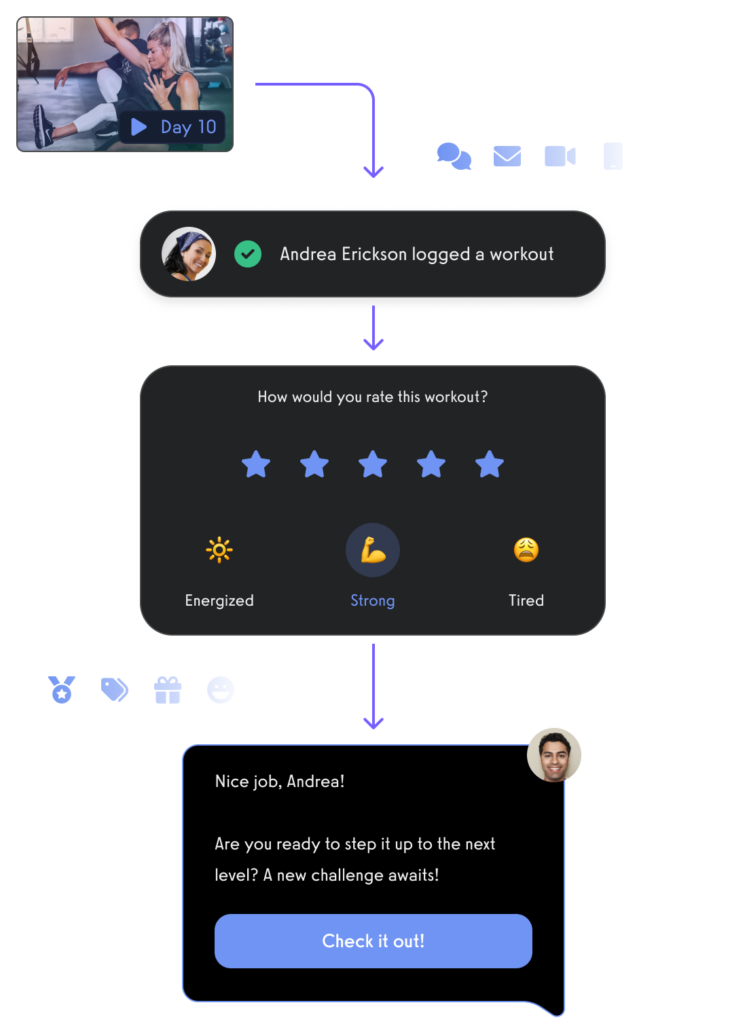
Manage leads with a fitness CRM.

Create and send fitness assessments with ease.
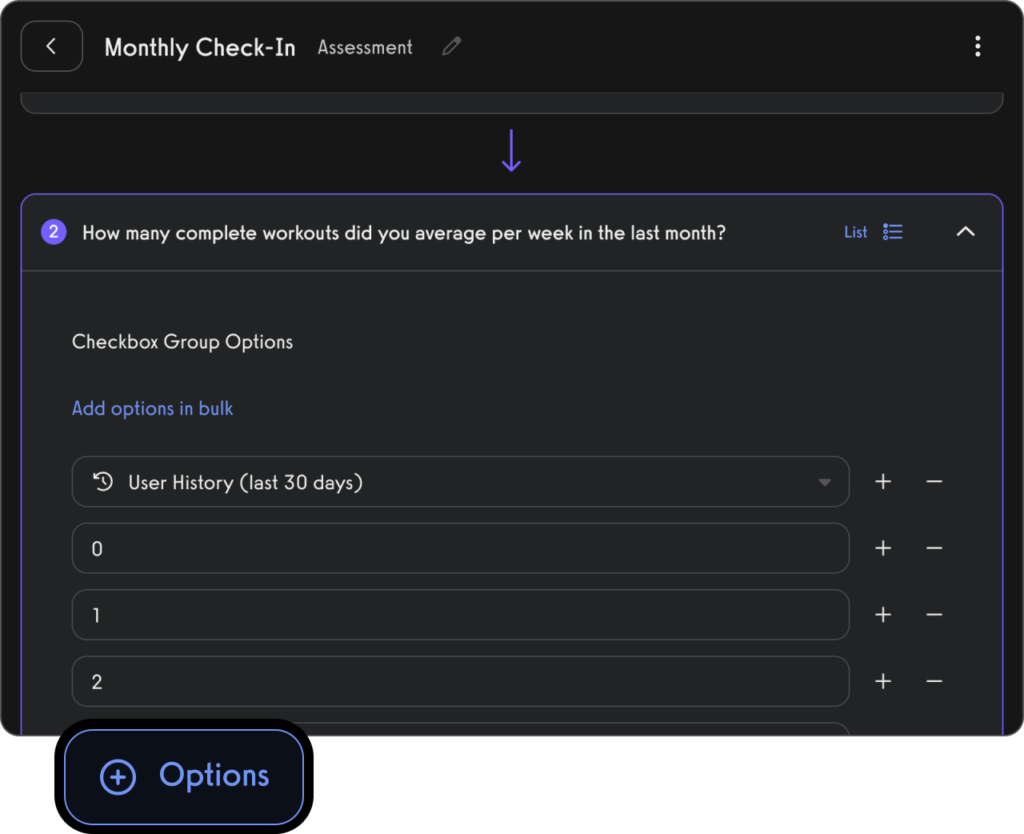
Use fitness habit tracking to inspire and motivate personal training clients (in-person and remote).

Use fitness progress photos to engage with clients.
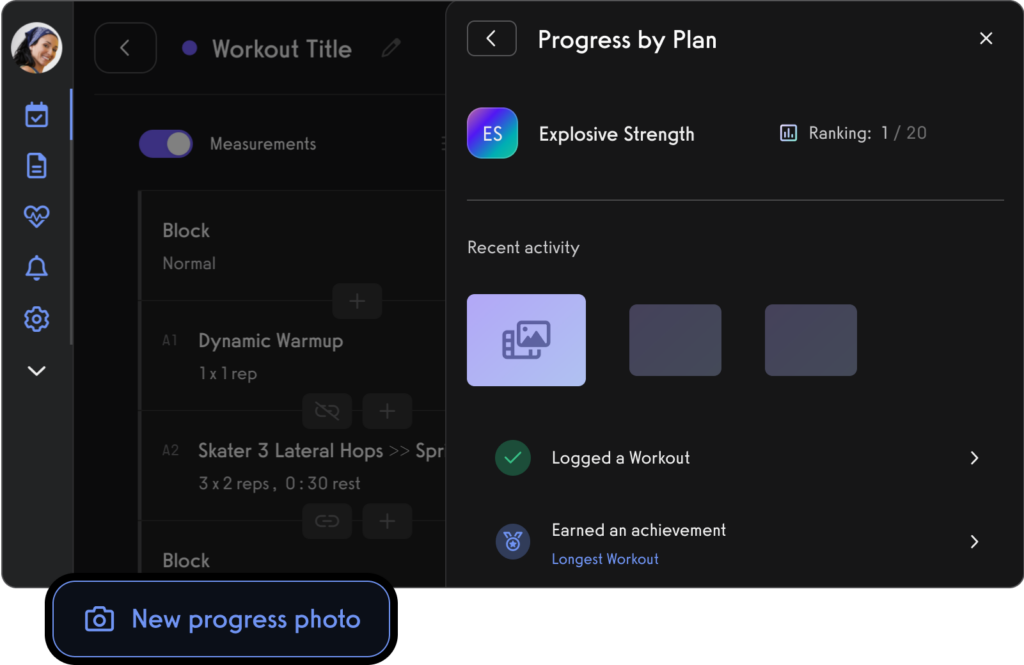
Use fitness leaderboards to track performance and inspire healthy competition.
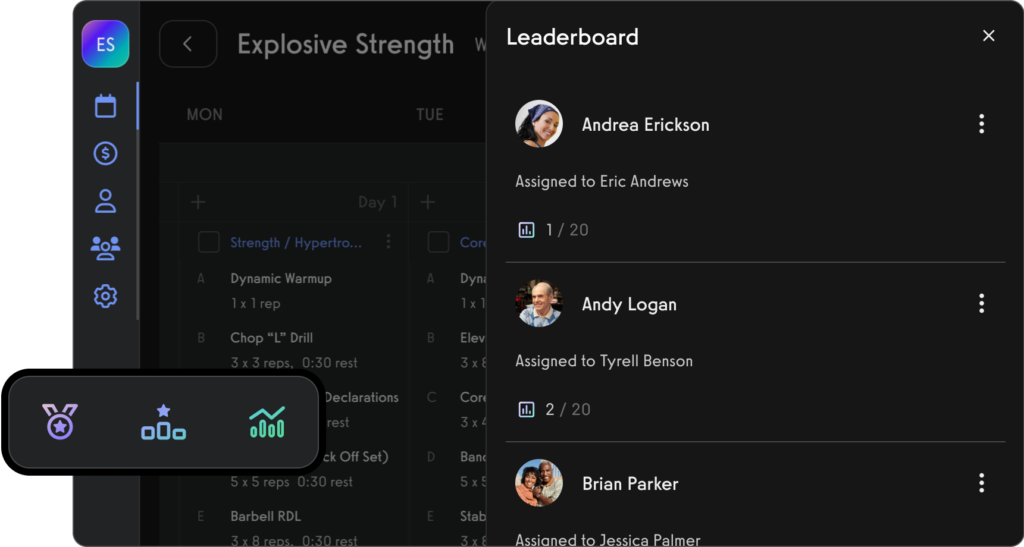
Use the exercise demonstration video library or create your own custom exercise demonstration videos.

Create workout plans for parents and dependents, teams and more.

Manage personal training clients with ease.

Book appointments for clients (Read More: Best Gym Booking Software)

Create classes and fitness groups

Manage fitness challenges (Read More: 100+ Fitness Challenge Ideas)
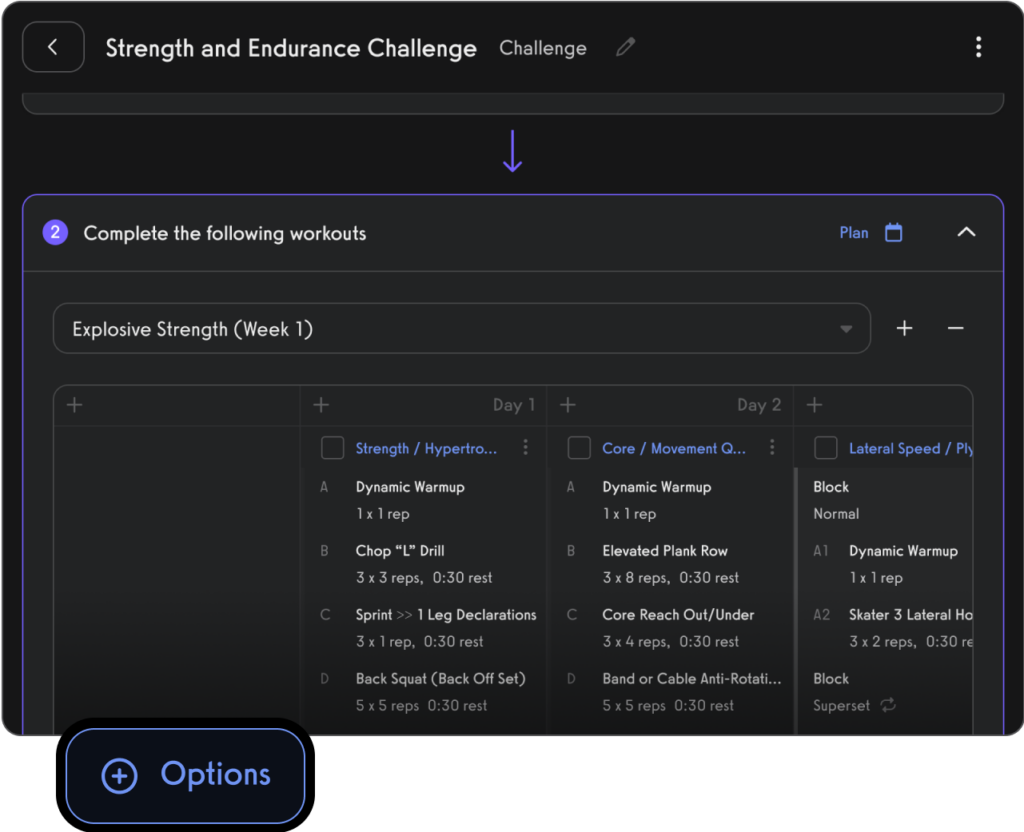
Process payments for open gym, classes, and personal training.

Communicate with gym members, athletes, team members, personal training clients, class members, parents, and dependents via SMS, email, and in-app push notification.
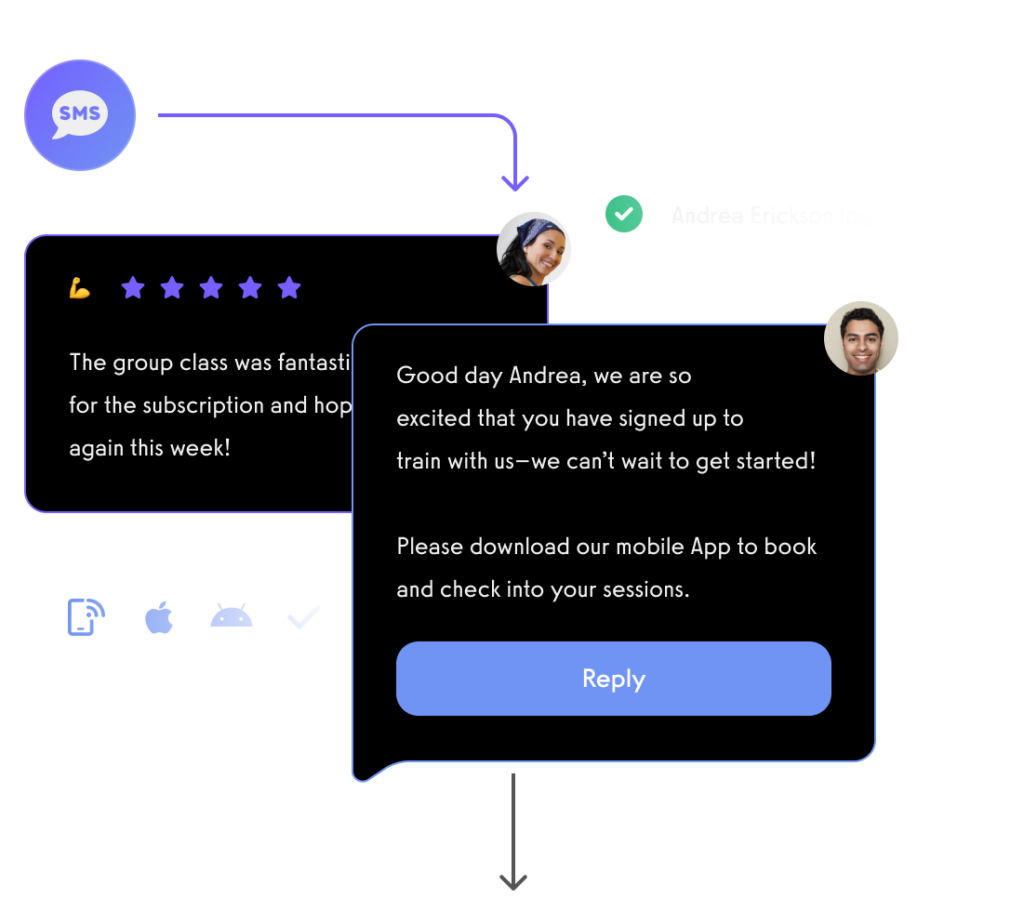
View performance over time, track personal records, and other fitness stats with performance reporting dashboards.
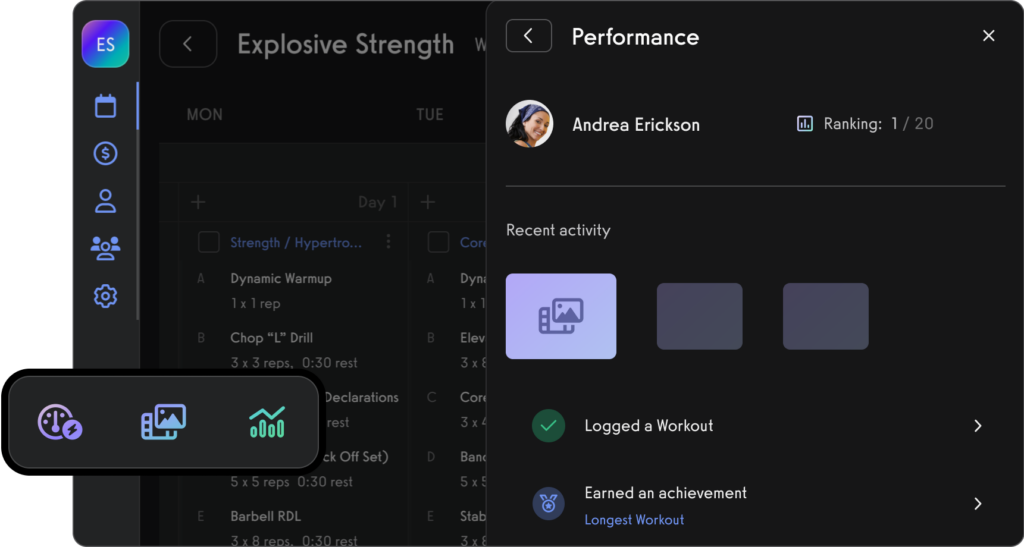
And of course, view all of your fitness business reports easily too.

All from your custom-branded fitness apps (Read More: Best Gym Mobile Fitness Apps Software)

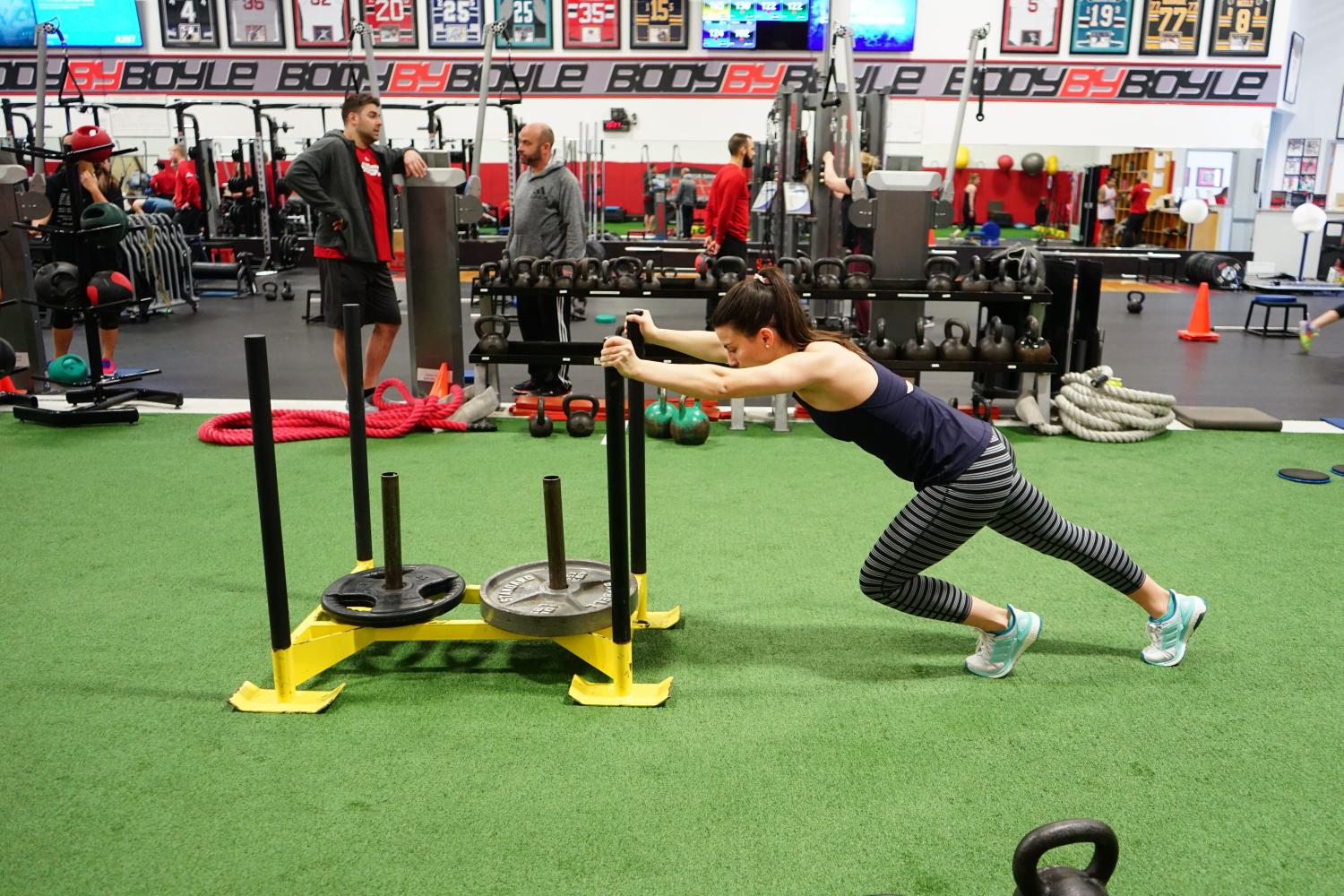
Want to learn how your fitness business can take it to the next level? Get a demo now!









